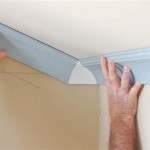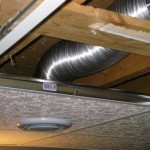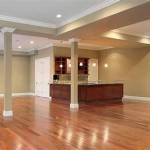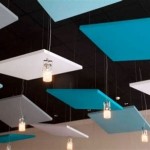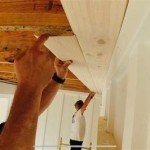How To Make A Vaulted Ceiling Look Better With Painting
Vaulted ceilings, characterized by their soaring height and architectural interest, present unique challenges and opportunities when it comes to interior painting. A well-executed paint job can accentuate the ceiling’s features, enhance the room's overall aesthetic, and even influence the perception of space. Conversely, a poorly planned or executed painting project can detract from the ceiling's inherent beauty and diminish the room's visual appeal. This article provides a comprehensive guide on how to effectively use paint to improve the appearance of a vaulted ceiling, covering key considerations from color selection to application techniques.
Before embarking on the painting process, a thorough assessment of the existing ceiling condition is imperative. Identifying any imperfections, such as cracks, stains, or uneven textures, is crucial for achieving a professional and lasting finish. These imperfections, if left untreated, will be amplified by the new paint and can significantly detract from the ceiling's appearance. Proper preparation, including cleaning, patching, and priming, is the foundation for a successful painting project.
Importance of Preparation: Cleaning, Patching, and Priming
The initial step in preparing a vaulted ceiling for painting is cleaning. Dust, cobwebs, and accumulated grime can prevent the paint from adhering properly, leading to peeling or an uneven finish. Using a vacuum cleaner with a brush attachment or a long-handled duster, meticulously remove any debris from the entire ceiling surface, including the apex and any architectural details. For stubborn stains or grease, a mild detergent solution can be used, followed by a thorough rinse with clean water.
Once the ceiling is clean, carefully inspect for any cracks, holes, or other imperfections. Small cracks can be filled with a paintable caulk, while larger holes may require patching with drywall compound. Apply the patching compound according to the manufacturer's instructions, ensuring a smooth and even surface. Allow the compound to dry completely before sanding it smooth with fine-grit sandpaper. Feather the edges of the patched area to blend seamlessly with the surrounding ceiling.
Priming is an essential step that is often overlooked, but it plays a crucial role in ensuring optimal paint adhesion and a uniform finish. Primer creates a smooth, even surface for the paint to adhere to, and it also helps to seal any stains or imperfections that may bleed through the topcoat. Choose a high-quality primer specifically designed for interior surfaces and apply it evenly to the entire ceiling using a roller or brush. Allow the primer to dry completely before proceeding with the painting process. In cases where the ceiling has been previously painted with a glossy finish, sanding the surface lightly before priming is recommended to improve adhesion.
Selecting the appropriate paint color is a critical decision that can significantly impact the overall look and feel of a room with a vaulted ceiling. The color choice should complement the existing décor, enhance the architectural features of the ceiling, and create the desired ambiance. Factors such as the room's size, natural light, and intended use should be taken into consideration when making this selection.
Strategic Color Selection: Maximizing Space and Ambiance
Lighter colors, such as white, off-white, and pale pastels, are generally recommended for vaulted ceilings, particularly in rooms with limited natural light. These colors reflect light, making the space feel brighter, larger, and more open. A lighter ceiling color can also visually raise the height of the ceiling, further accentuating the room's spaciousness. Conversely, darker colors, such as deep blues, grays, and browns, can make a room feel smaller and more intimate. While darker colors may be appropriate for certain applications, such as creating a cozy atmosphere in a bedroom or study, they should be used with caution in rooms with already low ceilings or limited natural light.
Consider using different shades of the same color for the ceiling and walls to create a subtle and harmonious effect. A slightly lighter shade on the ceiling can visually lift it, while maintaining a cohesive color scheme throughout the room. Alternatively, an accent color can be used on the vaulted ceiling to draw attention to its architectural features. For example, a contrasting color can be used to highlight exposed beams or decorative moldings. However, use accent colors sparingly, as they can overwhelm the space if not carefully implemented.
The sheen of the paint also plays a significant role in the overall appearance of a vaulted ceiling. Matte or flat sheens are generally preferred for ceilings, as they minimize imperfections and create a soft, diffused light. Glossier sheens, while more durable and easier to clean, tend to accentuate any flaws in the ceiling surface. A matte finish is particularly beneficial for ceilings with uneven textures or patched areas, as it helps to conceal these imperfections. Consider using a specialized ceiling paint with a matte finish, as these paints are specifically formulated to minimize glare and provide excellent coverage.
The application technique is paramount to achieving a professional-looking paint job on a vaulted ceiling. Due to the height and angle of these ceilings, specialized equipment and techniques are often necessary to ensure even coverage and minimize drips and splatters. Proper safety precautions should be taken to prevent falls and injuries.
Application Techniques and Safety Considerations
Using a high-quality roller with an extension pole is essential for painting vaulted ceilings. The extension pole allows for reaching high areas without having to constantly move a ladder, improving efficiency and reducing the risk of falls. Choose a roller cover with a nap appropriate for the ceiling's texture. A thicker nap is recommended for textured ceilings, while a smoother nap is suitable for smooth ceilings.
When painting near the apex of the vaulted ceiling, a ladder or scaffolding may be necessary. Ensure the ladder is stable and positioned on a level surface. If using scaffolding, follow the manufacturer's instructions carefully and ensure it is properly secured. Avoid overreaching while on a ladder or scaffolding, and always maintain three points of contact.
Apply the paint in thin, even coats, overlapping each stroke slightly to ensure complete coverage. Avoid applying too much paint at once, as this can lead to drips and runs. Work in small sections, and frequently check for any imperfections or drips. Use a brush to cut in around the edges of the ceiling and any architectural details, such as beams or moldings.
Proper ventilation is crucial when painting any interior space, especially when working with vaulted ceilings. Open windows and doors to allow for adequate airflow, and consider using a fan to circulate the air. This will help to dry the paint faster and reduce the risk of inhaling harmful fumes. Wear appropriate protective gear, such as a respirator mask and safety glasses, to protect yourself from paint fumes and splatters.
After applying the first coat of paint, allow it to dry completely according to the manufacturer's instructions. Inspect the ceiling for any imperfections that may require touch-up. If necessary, apply a second coat of paint to achieve complete coverage and a uniform finish. Once the second coat is dry, carefully remove any painter's tape and clean up any spills or splatters.
By carefully considering the factors outlined above, and diligently following the recommended preparation, color selection, and application techniques, it is possible to significantly enhance the appearance of a vaulted ceiling with paint. A well-executed paint job can transform a room, creating a brighter, more spacious, and visually appealing environment.

13 Unbeatable Vaulted Ceiling Ideas 2025 Checkatrade

Vaulted Angled Ceilings What Color They Should Be Part 3

Vaulted Angled Ceilings What Color They Should Be Part 3

13 Unbeatable Vaulted Ceiling Ideas 2025 Checkatrade

How To Wallpaper Or Paint Angled Walls And Sloped Ceilings

Vaulted Ceiling Options Addicted 2 Decorating

10 Ways To Make A High Ceilinged Room Look Cozier

Vaulted Ceiling Options Addicted 2 Decorating

Painting The Ceiling A Diffe Color In Living Room Yay Or Nay Decorologist

How To Wallpaper Or Paint Angled Walls And Sloped Ceilings
Related Posts

